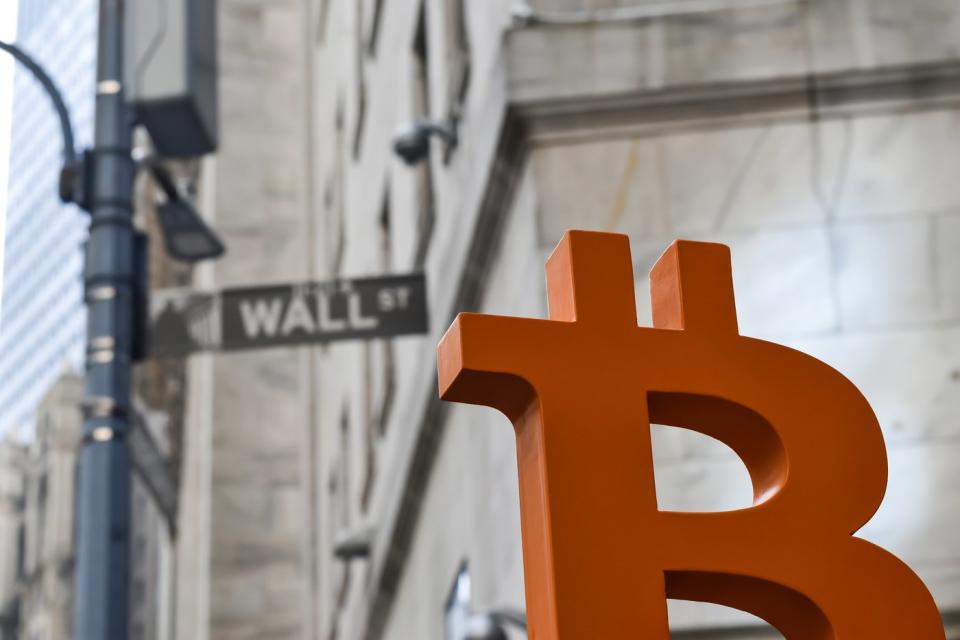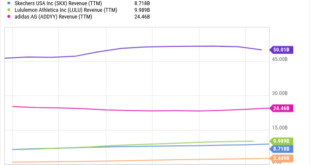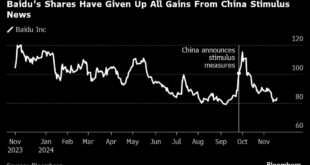Although Bitcoin (CRYPTO: BTC) is sitting as of this writing almost 25% below its all-time high of $73,750 reached earlier this year, there are plenty of bullish crypto investors who are still convinced that Bitcoin will skyrocket over the long run. Among them is Michael Saylor, founder and executive chairman of MicroStrategy (NASDAQ: MSTR), who recently doubled down on his prediction that a single Bitcoin would be worth $13 million by the year 2045.
At last report, MicroStrategy owned 226,500 Bitcoins with a market value around $14 billion. It touts itself as “the largest corporate holder of bitcoin and the world’s first bitcoin development company.” Bloomberg reported last month that Saylor himself owns about $1 billion worth of Bitcoins.
Based on Bitcoin’s recent price of $55,000, a $13 million target represents an astronomical 23,000% return if you buy today and hold for the next two decades. Obviously, a lot has to happen for that to become a reality. Let’s take a closer look.
Bitcoin’s long-run performance
Yes, seeing a $13 million price tag for Bitcoin can induce a fair amount of sticker shock. But if you dig into the numbers, the math actually starts to make sense. And a lot of that has to do with the compounding power of money. If any asset is allowed to compound in value for a long period of time, the results have the potential to shock.
In the case of Bitcoin, it would require a compound annual growth rate (CAGR) of 30% for the magic to happen and it to jump from $55,000 now to $13 million in 2045. In other words, if Bitcoin can increase in value by 30% per year, for the next 21 years, an upfront investment of $55,000 would turn into $13 million.
And, while it may be unlikely, a CAGR of 30% for Bitcoin is not out of the question. From 2011 to 2021, Bitcoin delivered annualized returns of 230% per year. And Bitcoin returned approximately 150% in 2023. Already this year, Bitcoin is up more than 30%. Over the past five years, the only blemish was 2022, when Bitcoin fell nearly 65%.
So what can investors realistically expect? In an interview this month with CNBC, Saylor predicted that during the next two decades, Bitcoin’s annual return would steadily fall over time, from about 44% a year to 40% to 35% to 30% to 25% to… well, you get the idea. The final long-run number for Bitcoin, says Saylor, would be the annual return of the S&P 500 plus an extra 8% to compensate investors for the extra risk.
At some point, of course, it’s worth taking a moment to ponder what a price tag of $13 million really means for Bitcoin. Based on its current circulating coin supply of 20 million, that implies a future market cap of $260 trillion. That dwarfs the value of any tech stock today, and in fact, it dwarfs the value of the entire S&P 500, which today sits at around $45 trillion.
Even if we assume that U.S. stocks will grow at a rate of 10% per year over the next 20 years, a price tag of $13 million still implies that Bitcoin would represent an astonishing amount of the world’s wealth in the year 2045. For that reason alone, it’s worth having a healthy dose of skepticism about Bitcoin’s future price trajectory.
Bitcoin as an asset class
For much of its history, Bitcoin has been uncorrelated with any major asset class, and that has made it very unique from a risk diversification perspective. Quite simply, Bitcoin can zig when other assets zag.

Thus, Bitcoin is growing in favor with billionaire hedge fund managers, who increasingly view it as a way to hedge risk. In some cases, that risk might be economic, such as the risk of inflation. In other cases, that risk might be geopolitical. In the CNBC interview, Saylor uses the example of missile strikes to illustrate this point. What do you do as an investor if you wake up one morning and hear that there have been missile strikes somewhere in the world?
Until recently, the answer to that question might have been: Buy gold. But there is growing popularity in the notion that Bitcoin is “digital gold.” Some investors are buying Bitcoin, and not gold, as a hedge against worst-case scenarios popping off around the world. It sounds surprising, but Bitcoin might actually be a safe haven asset.
All of which is to say: The more that Bitcoin can cement its status as a valuable, stand-alone asset class, the more likely it is that its price could skyrocket during the next two decades. That’s because investors will be willing to allocate a greater and greater share of their portfolio to it.
Risk factors
Of course, there are several factors that could derail Bitcoin during the next two decades. For example, if Bitcoin’s annual returns decline significantly for an extended period of time, investors might just decide that they can get the same type of return, while taking on much less risk, simply by buying hot tech stocks.
Or, even worse, the U.S. political and regulatory establishment might shift against Bitcoin. For example, there might be a crackdown on Bitcoin mining, given the concerns over its environmental impact. Or, regulators in the U.S. might decide to ban Bitcoin entirely, as they’ve done in China and other nations. At the very least, the government could make things difficult for Bitcoin owners simply by making a few quick changes to the U.S. tax code.
That said, I remain bullish on Bitcoin’s long-term prospects. As long as it continues to deliver anywhere close to the type of performance that it has delivered over the past decade, investors are likely to be very pleased at Bitcoin’s valuation 20 years from now, even if it’s nowhere close to the astronomically high valuation predicted by Michael Saylor of MicroStrategy.
Should you invest $1,000 in Bitcoin right now?
Before you buy stock in Bitcoin, consider this:
The Motley Fool Stock Advisor analyst team just identified what they believe are the 10 best stocks for investors to buy now… and Bitcoin wasn’t one of them. The 10 stocks that made the cut could produce monster returns in the coming years.
Consider when Nvidia made this list on April 15, 2005… if you invested $1,000 at the time of our recommendation, you’d have $710,860!*
Stock Advisor provides investors with an easy-to-follow blueprint for success, including guidance on building a portfolio, regular updates from analysts, and two new stock picks each month. The Stock Advisor service has more than quadrupled the return of S&P 500 since 2002*.
*Stock Advisor returns as of September 16, 2024
Dominic Basulto has positions in Bitcoin. The Motley Fool has positions in and recommends Bitcoin. The Motley Fool has a disclosure policy.
This Cryptocurrency Could Soar by 23,000% Over the Next 2 Decades, According to MicroStrategy’s Michael Saylor was originally published by The Motley Fool
Source link
 meganwoolsey Home
meganwoolsey Home

